#2, JUNE 2014
STAR POST (ART)
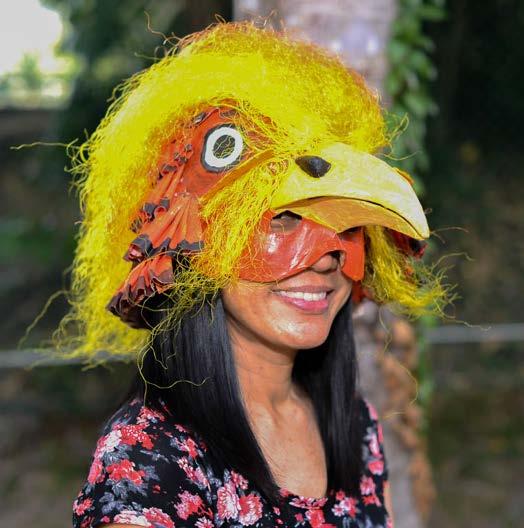
Taking Lessons Outdoorsa lesson unit
by Art STAR Champion (Primary)
With the desire to bring art lessons outdoors and to make use of a sculpture park next to her school, Mrs Yan designed a lesson unit for her Primary
Three students on public sculptures based on the enduring understanding that public sculptures communicate to the viewer, inspire imagination and enhance the environment by making it more visually pleasing.
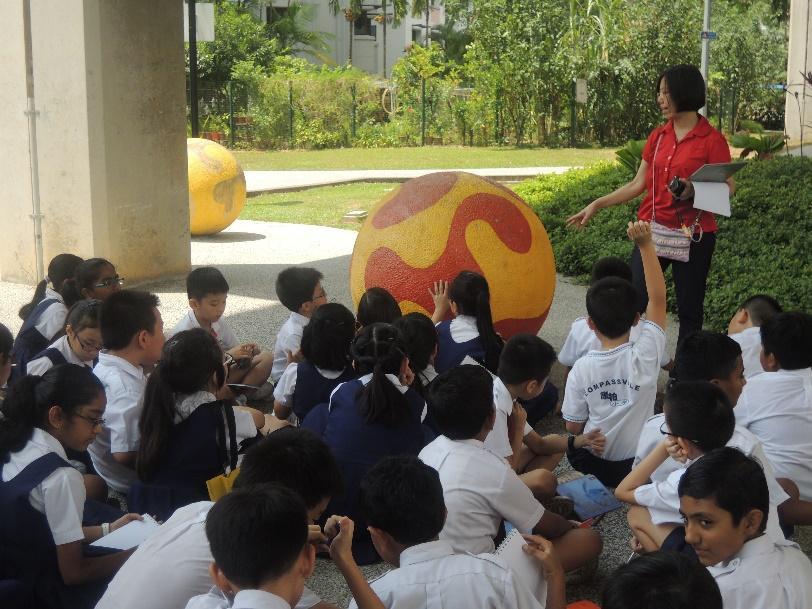
Public Sculptures
Lesson Design by Mrs Yan Chuat Tong, HOD Aesthetics, Compassvale Primary School
Text and images compiled by Ms Grace Kwa, Programme Manager (Art), STAR
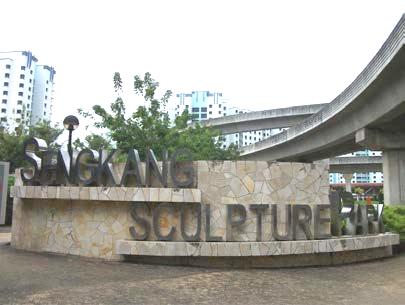
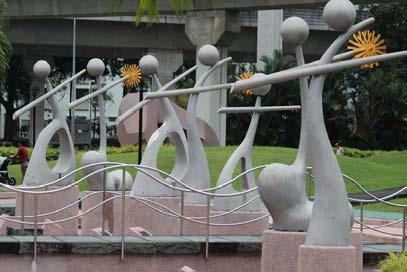
In the first lesson, students explored the sculptures in the neighbourhood park by observing and interacting with the works. They also expressed their thoughts about the public sculptures through guided questioning, based on an Artful Thinking Routine–Colours, Shapes, Lines–a routine for exploring the formal qualities of art. As the students are looking at sculptures, ‘Forms’ was used to replace ‘Shapes’ in the discussions.
U NIT OBJECTIVES :
• Students will appreciate public sculptures in the environment.
• Students will make sketches of sculptures they observe.
• Students will learn that shapes are 2-D and forms are 3-D.
• Students will explore the use of assorted materials to create a sculpture that expresses a given theme.
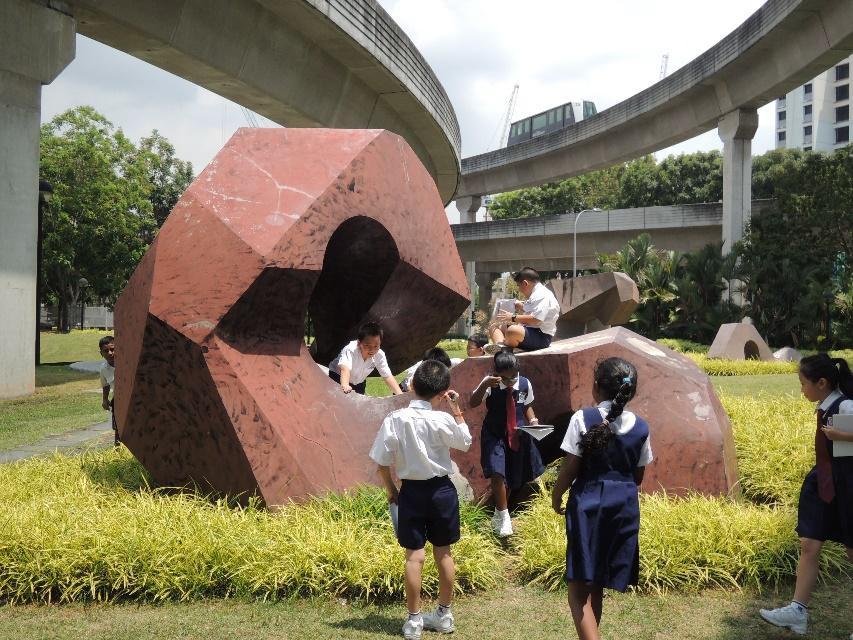
1. Take a minute to look at the artwork. Let your eyes wander over it freely. What do you see? Take a few observations from students and then move on to the next step.
COLOURS FORMS LINES
What colours do you see? Describe them. What kinds of forms do you see? Describe them. What lines do you see? Describe them.
2. Observe and describe the colours, forms, and lines in detail. Make 3 columns.
3. Choose a colour, shape, or line that you listed.
* How does it contribute to the artwork overall? (i.e. How does it help the artwork “work?”) Consider:
• How does it contribute to how the artwork feels?
• How does it contribute to the mood of the artwork?
• How does it contribute to how the artwork looks?
• How does it contribute to the story the artwork tells?
• How does it contribute to the ideas in the artwork?
4. * Do this with at least two elements. They can be chosen from any column.
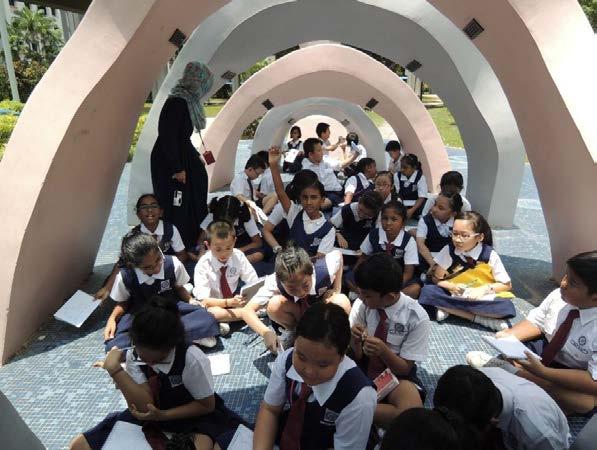
As an introduction to observational studies, pupils then made sketches of selected sculptures in the park. Mrs Yan also explained that they were using shapes to represent forms when making a sketch on paper. While many students struggle with understanding three-dimensional forms and depicting them on two-dimensional plane, many where observant to details, devising drawing solutions to the visual spatial challenge. Subsequently, this would be a good reference point when students are formally introduced to depicting forms and tonal shading in future.
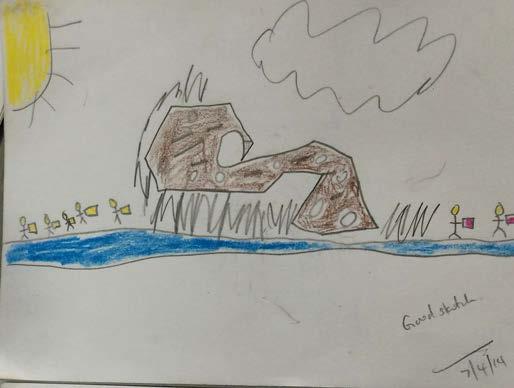
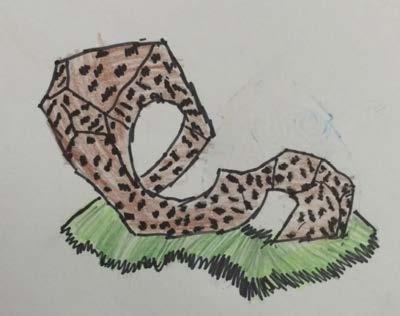
Adapted from: http://www.pzartfulthinking.org/
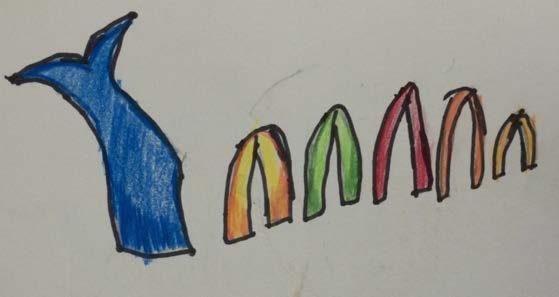
In the next lesson, a few prominent public sculptures like Han Sai Por’s Shimmering Pearls (1999) and Anthony Poon’s Sense Surround (2006) were introduced to students. Students discussed the aesthetics quality of the sculptures and how their presence could possibly enhance the surroundings. Students were then given some plasticine to replicate a sculpture which they had seen in the PowerPoint presentation or at the neighbourhood park. They explored different ways of manipulating plasticine such as rolling, pinching and twisting to create the overall form, and layering and carving to show details, as well as the use of additional found tools like ruler and pencils to straighten the sides and create surface textures.
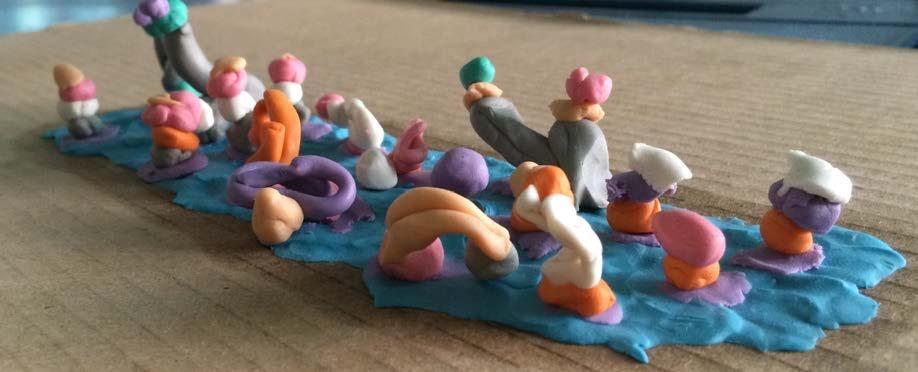
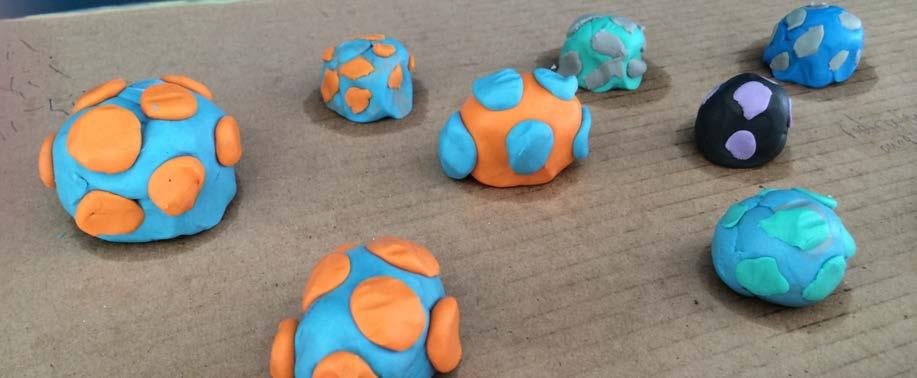
In the next 2 lessons, students embarked on creating a model of a public sculpture designed for a park. To facilitate the art-making, a theme ‘Harmony’ was set for the students. A variety of artworks that addressed aspects of this theme were shared with the students.
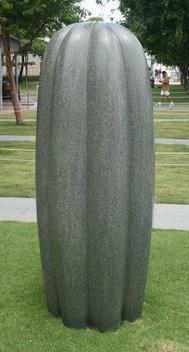
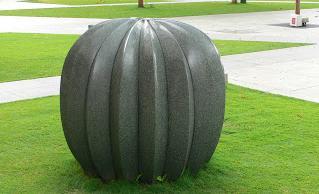
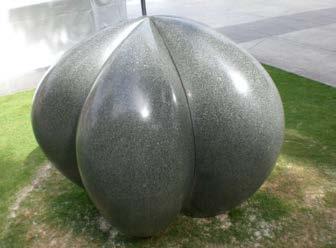
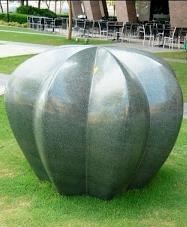
Students in their excitement to discuss the theme ‘Harmony’ were focused on how the work reminded one of the need to be in harmony with nature. However, discussion could also extend to:
- the seeds’ potential for growth;
- being different, they have potential to grow into different futures;
- the location of the work at Esplanade, which could mean that the arts is an area of growth Singapore hopes to nurture.
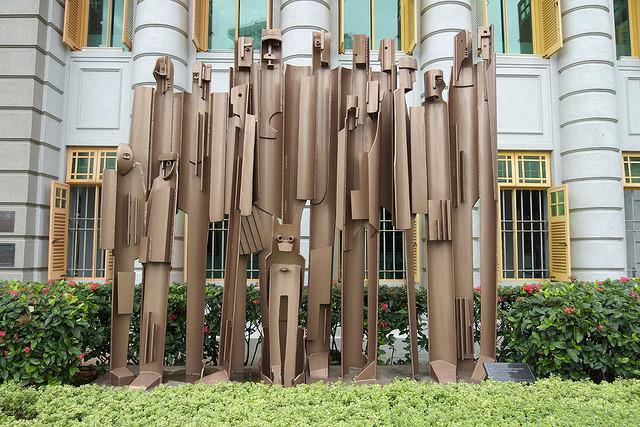
Oh Sang Wook Negative Mass, Harmony of the Generations, Painted Steel, Old Street Police Station, Singapore
The Elegant Art Task
Create a sculpture for a park using the materials given to you. The theme of the sculpture is “Harmony”. Your art work should be able to stand on its own and it should be less than 30cm in height.
Each table will be given a box of materials. You are not allowed to use or exchange materials belonging to another table.
Discuss with your partner on the design. Both of you need to share ideas, negotiate and make a decision together.
- What is the idea of ‘harmony’ to you?
- How do you show ‘harmony’ in your artwork?
- Which materials will you choose/use?
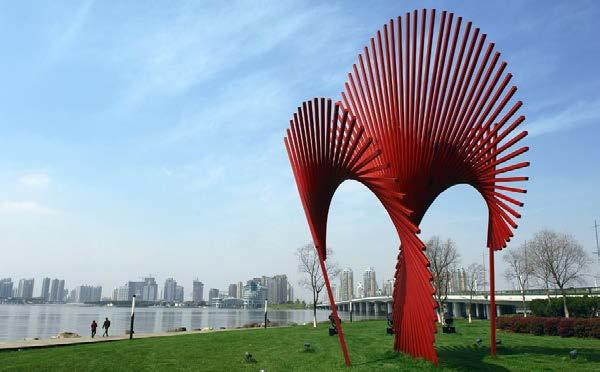
Sun Yu-Li, Harmony Suzhou Industrial Park, China
Students commented that the figures in the sculptures are standing together like a close knitted family. They also noticed that despite their physical differences, the figures could co-exist. Some students subsequently went on to make links to Singapore’s harmonious multi-racial society.
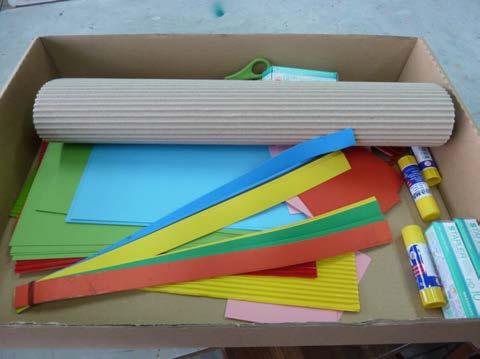
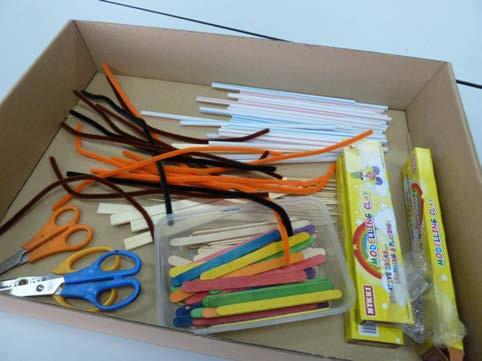
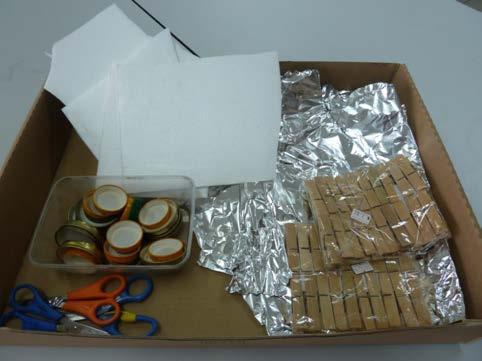
The use of art stations where different materials were used stems from a strategy adopted in ‘Teaching for Artistic Behaviour’ classrooms. Mrs Yan wanted students to experiment with a variety of materials, but to prevent students from being overwhelmed by the variety, each group is limited to a certain set of materials. One station focused on different types of paper with glue sticks and staples as adhesives. Another station focused on the use of plasticine with sticks and pipe cleaners to form support. The last station comprised of everyday objects like
Mrs Yan shared with the class that this magnificent 12-m tall sculpture features two interlocking curved forms made out of dynamic red lines to
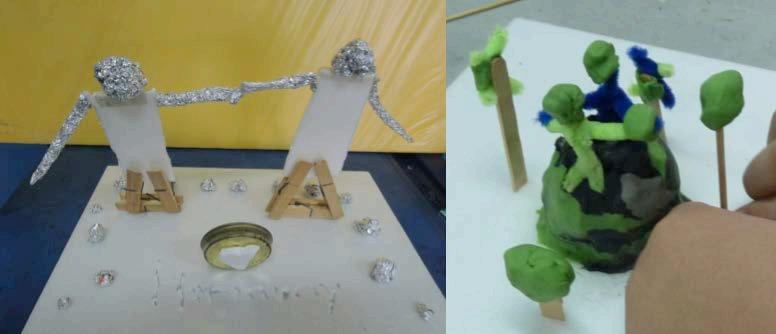
represent the friendship between China and Singapore and the fruit of their collaborative efforts.
To impress upon students that the artmaking process was just as important as the final product, reflection questions adapted from STAR’s Effective Questioning Guide were used.
- With regard to how your idea developed, what was one important decision you and your partner made as you all worked? What were some of the challenges? How did you overcome these?
- Look at the way you used the given materials. If you could improve one thing, what will that be, and how? What have you discovered about this material or techniques that you used?
- Let’s reflect on your work. Does the work meet your expectations? Were there parts that are under-worked or over-worked? Why? How does this compare with your earlier attempt (i.e. the first sculpture made with the plasticine)?
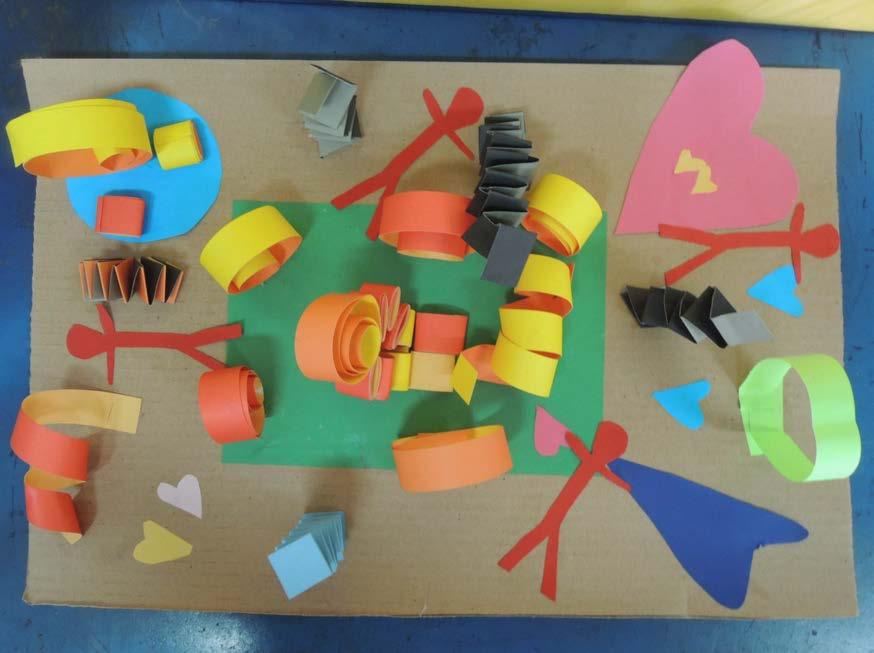
Teacher’s Reflection
Students’ enthusiasm in the Unit “Public sculptures” had been unwavering since Lesson 1 when they had the outdoor lesson at Sengkang Sculpture Park. They were observant and were highly engaged in the sketching of the sculptures.
Making learning relevant through contextualising learning of arts
Their multiple perspectives and interpretations of the public sculptures discussed surprised me. After interacting with the sculptures at Sengkang Sculpture Park, they spoke from personal experience how the sculptures appealed to them and enhanced the environment.
Creating
a conducive art learning environment
By exposing students to some of the famous public sculptures in Singapore, I have also learnt more about them in the process of my lesson planning, piquing my interests in this area. By crafting questions to facilitate the art discussion, I could scaffold the discussion such that students start with keen observations before interpreting the artworks. However, this is not meant to ask students a barrage of questions, but it is crucial to build on their responses. Meaningful art discussions deepened my students’ engagement and stretched their critical thinking.
Providing choices and empowering students to make decisions
Working with their partners, students had the opportunities to manage negotiation, make joint decisions and build on each other’s ideas. The students were divided into three stations, each with a different set of materials. Students worked within the constraints of the given materials to create a sculpture based on the theme ‘Harmony’. The lesson designed supported exploration and discovery as students worked with different materials. Many of the materials given were new to them. They had not much prior knowledge in handling these materials and were thus challenged to think creatively to resolve problems.
The constraints kept the task manageable while allowing room within set parameters for students to make important decisions.
Areas for improvement
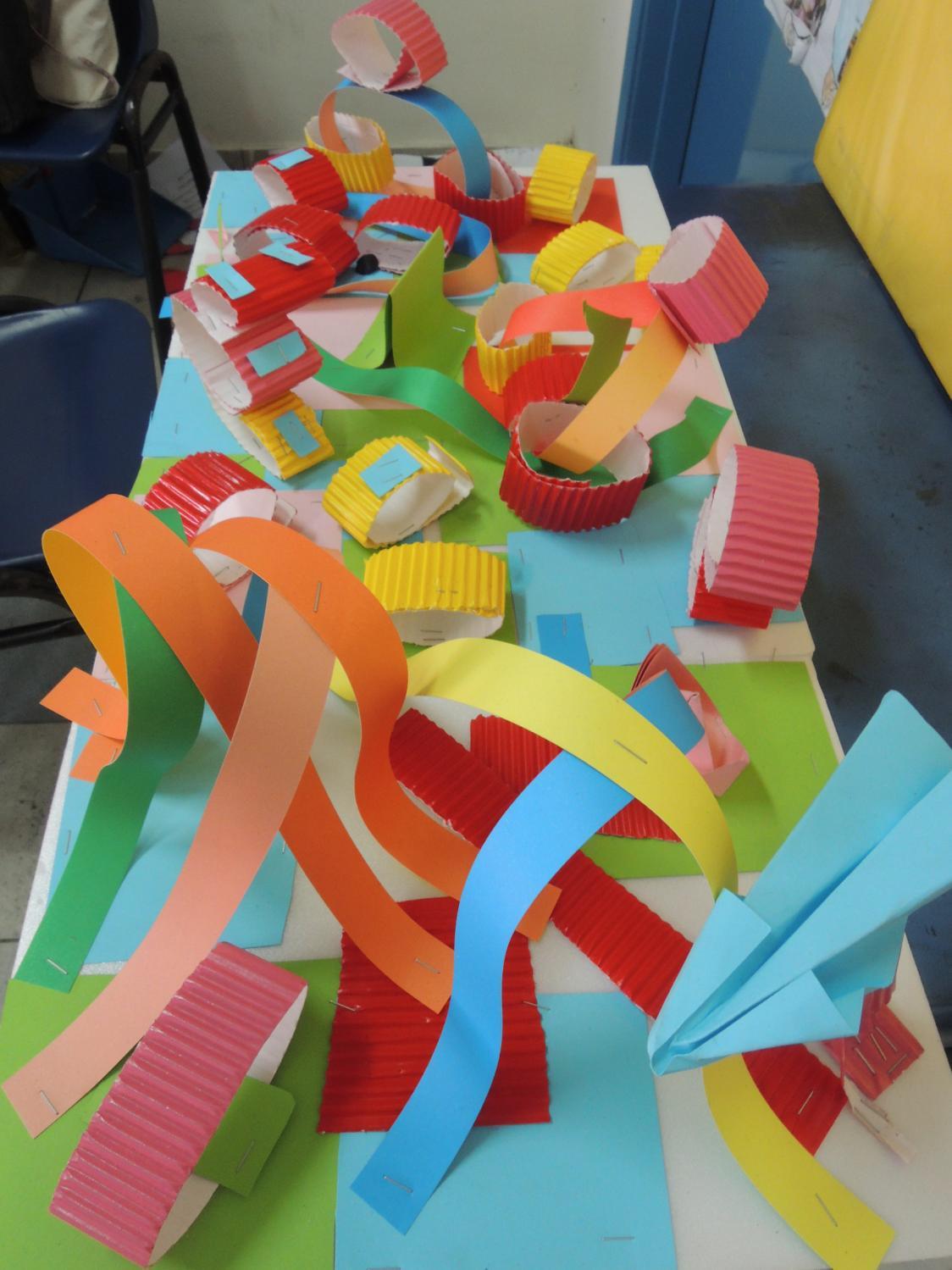
While students in the station with plasticine were confident to start work, students in the other 2 stations were more hesitant and unsure. I could have an additional lesson for pupils to gain experience in working with paper as well as
everyday objects before starting on this segment. For this additional lesson, the pupils would discover new techniques such as folding, twisting and weaving of paper and use of tying and knotting of string to assemble found objects.
With this knowledge gained about paper and everyday objects, students who were given such materials would be more confident and imaginative when creating their own sculptures in the next lesson.
As students shared ideas about what harmony meant to them, these points could be captured on the whiteboard for the class to reference as they embarked on creating their own sculptures. Also, they could make use of their sketchbooks to draft out some ideas before starting as most of them were overly excited by the materials and started without much ideation.
The theme ‘Harmony’ is not easy for students to express, especially if they are not so strong in articulating their thoughts and justifying their views.. More concrete themes such as ‘Family Harmony’ or ‘Beautiful Nature’ can be used. Alternatively, students can be asked to design a sculpture to commemorate a particular school event such as the school’s 100th anniversary or Children’s Day celebrations. They can also based their sculptures on a specific location in mind such as the school’s eco-garden or playground. As teachers, we must know our students so that an appropriate learning environment with suitable performance tasks that match students’ zone of proximal development can be created to facilitate effective learning.
Museum Etiquette
Simplified
By Lim Kok Boon, Programme Director (Art), STAR
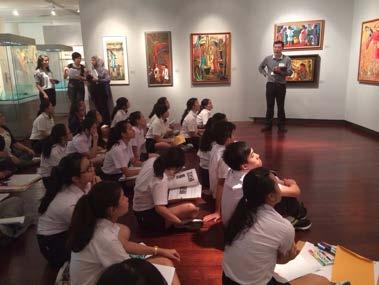
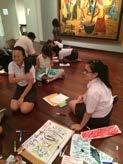
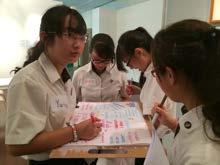
A 2013 study in Educational Research, “Learning to Think Critically: A Visual Art Experiment”, suggests that taking students to an art museum improves critical thinking skills, specifically students’ observations, interpretations, evaluations, associations, instances of problem finding, comparisons and instances of flexible thinking (Greene, Kisda, & Bowen, 2013). But these student outcomes are only possible if learning is well facilitated. An integral part of learning in museums is the understanding of what museum etiquette entails.
Museum etiquette refers to a set of polite behaviour expected of museum visitors. They refer to rules put in place to protect artworks and collections from damage for future generations. Museum rules dictating specific decorum may vary from museum to museum (especially with regard to the use of audio-visual equipment without prior written permission). Yet, there are generic sets of guidelines to allow all visitors to museums to make the most of their visit. Museum etiquette allows us to show we care and respect the people visiting museums, the artworks, and the experience. Art museums and galleries are special places designed to show artworks in their best possible light. Museum visits are special time-out from the hustle and bustle of school so each visit should be cherished.
If the museum visit is chaperoned by more than one teacher, practice shared responsibility for keeping an eye on your students. A reasonable group size will depend on the activities that are planned by the teachers. A docent guided tour for young children might consists of 10-15 students or
20 students if the docent is familiar and confident to handle a larger group. If the group is too large, it could affect the museum experience of other visitors. If teachers are conducting their own self-guided tour for a particular exhibition or collection, a group of 15 is recommended to allow ample opportunity for every student to participate and contribute to a meaningful discussion on art, without raising their voice, or failing to see an artwork as everyone huddles around it. Having a smaller group means it is easier to keep an eye on your students in a busy museum.
Plan your visit. For teachers leading their self-guided tours, they should visit the exhibition beforehand where possible, or familiarize themselves with information on the exhibition and artworks on show. Decide on the learning goals of the visit, and strategise which works should be covered. Make each visit an in-depth exploration of a few works, and if your students are older and more responsible, do give them sometime to look at works they are visually attracted to. A visit could be a tangible reward for a class of students. Talk about it, use facilitative questioning strategies and gain some new insights to how your students think and feel about art.
Consider administrative and logistics arrangements. Large bags and bulky items are usually not allowed in the galleries. If you are dismissing your students from the museum directly, do check with the museum/gallery staff if there are designated places to store student belongings. Where possible, minimize what the students bring with them, and devise a way to store their personal valuables safely. Some museums only allow pencils, not pens, to be used in the
gallery for writing or drawing. Check with the museum staff ahead of time.
Consider how a visit is part of a larger lesson unit. A visit could be used to introduce physical visual stimuli for students to gain a common reference point when they learn a new art concept or technique. A visit could be used mid-way through a lesson unit so students can check on their topical understanding before they make something back in school. The museum visit could be part of students’ research efforts on an area of interest for the students or based on the flow of the lesson. Help students understand the value of open attitudes towards art and new ideas, and discuss how original works of art differ from reproductions.
Review etiquette points prior to the visit, or at the start of the self-guided tour.
The following guidelines and explanations are designed to allow the teachers to paraphrase or use directly to tell students explicitly before the visit.
Respect the space, respect the atmosphere.
• Walk or talk without disturbing other museum visitors. While a museum is a place for quiet moments for visitors to think about an artwork, it is also a social place for people to appreciate art together by talking about art. But just as how you want your personal space to be respected, you should respect the personal space of other museum visitors. They have an equal right to enjoy the artworks too.
• Watch when you turn or step back from appreciating an artwork.
• No food or drinks are allowed in the exhibit areas.
• Listen to important instructions and information from the teacher or museum staff.
Respect the Art like your most prized possession.
• Do get excited about the artwork, but see the artwork from at least an arm’s length. Imagine that you will not liked to be blocked when you viewing an artwork too.
• Help protect the artwork and collection so other people can enjoy them. If the museum or artist allows the work or interactive display to be touched, do so gently. Most artworks do not allow visitors to touch them because they are very fragile. Even oil from our human skin can cause damage to artworks over time.
• Be sensitive to how an artwork should be viewed. An artist may have produced an artwork for a particular purpose and reason. Artists from a different culture may make and present art that is very different from what we usually see. While visitors are encouraged make different interpretations of what they see, do not make negative remarks about an artwork. Instead, recognize that art expresses beliefs, ideas and human experiences throughout history in all corners of the world. As cultural
documents, art provides us an opportunity to understand how others and have lived and what they value.
Each museum visit is a learning opportunity. The goal of every museum visit should allow art teachers to encourage students to strengthen their ability to look closely, thinking critically of things they see and experience, and formulate their own interpretations based on contextual information provided by the museum, docent, or teacher. Museum etiquette could also be seen as part and parcel of managing students’ behaviour that facilitates learning while allowing students to feel that they are part of a larger art appreciating society.
References:
Greene, J., Kisda, B. & Bowen, D. (2013). The Educational Value of Field Trips, Education Next, 14(1), Winter 2014, Accessed 10 May 2014 from http://educationnext.org/theeducational-value-of-field-trips/ and http://www.bu.edu/ sed/files/2013/11/Bowen-Greene-Kisida-2013.pdf
Guggenheim No Country:
Educators’ Workshop and Exhibition Preview
STAR is delighted to have partnered Guggenheim Museum and Centre for Contemporary Art (CCA, Gillman Barracks) to bring about the No Country: Educators’ Workshop and Exhibition Preview held on 9 and 12 of May. The participatory workshop allowed art teachers to experience teaching strategies that “deepen engagement, support curriculum connections, and prompt critical thinking”. The workshop was facilitated by Sharon Vatsky, a veteran art educator with a rich teaching background in American elementary schools and museum education. Sharon is the Director of Education and Family Programmes at the Solomon R. Guggenheim Museum in New York.
In one of the activities, Sharon got participants to imagine using their five senses to relate to an artwork. On a piece of paper, she asked participants to write down their responses to the the following prompts, based on Love Bed, 2012 by Tayeba Begum Lipi.
- What do you see?
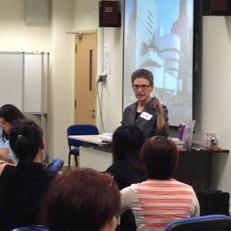
- What do you ‘hear’ when you see this work?
- If you could taste the work, what taste would it have?
- How would the work smell?
- How would the work feel?
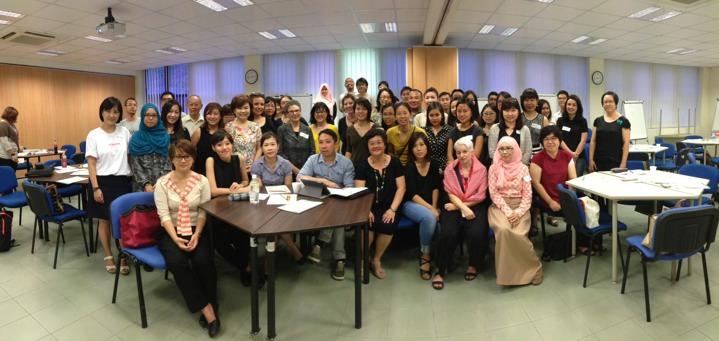
The above strategy was particularly apt for Lipi’s artwork, a bedframe covered with razor blades. It was a powerful piece that triggered much emotional reaction in audience. Responses like hearing ‘screams‘ , ‘ouch!‘ and tasting ‘blood’ , ‘metal’ were common. Sharon explained that these spontaneous responses to the artwork set the stage for more in-depth discussion later.
All participants found the workshop beneficial and commented that the workshop allowed them to envisage different approaches and purposes to teach and learn in an art gallery or
With enthusiastic feedback from fellow art teachers, STAR would continue to partner with museums and galleries to provide professional learning opportunities in areas related to the Study of Visual Art and museum education. By adapting inquiry-based approaches to engage students in active learning, we are better equipped to help students advance their observation, analysis, interpretation and evaluation, as well as connection and personal meaning making to the art they encounter.
We are pleased to be able to include two documents recommended by Sharon to help art teachers shape meaningful and engaging museum visits:
• Tour Planning Template that encourages art teachers to scope their museum/gallery visit.
• Tour Checklist that complements the tour planning template, aiding art teachers to plan a self-guided tour for their students.

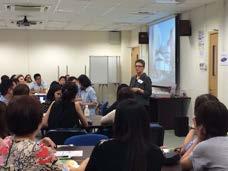
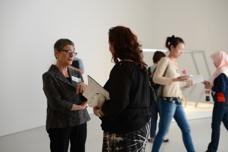
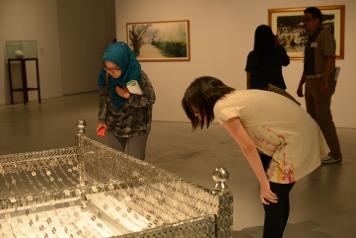
Ms Vatsky with the teachers during the Educators’ Workshop held at STAR; Teachers examining Lipi’s Love Bed, 2012, at the Guggenheim: No Country exhibition at CCA
A video record of this educators’ workshop will be made available on OPAL. Details will be made available in the next STAR Post. Do watch out for it!
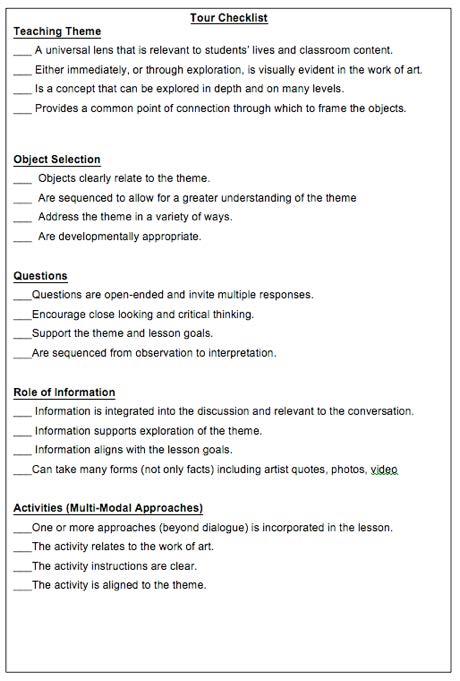
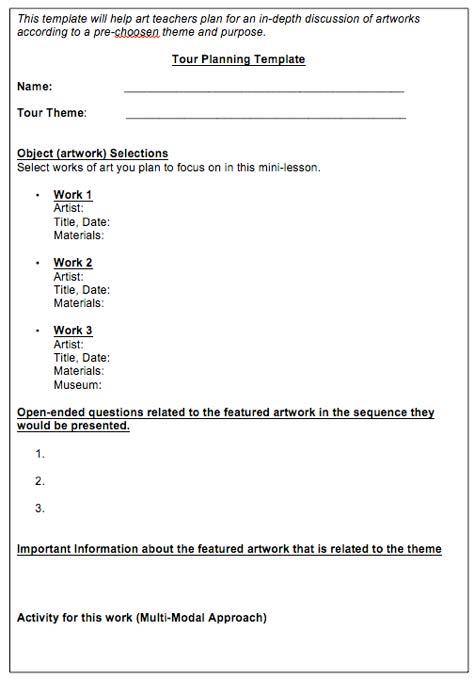
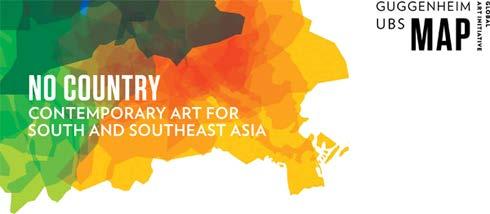
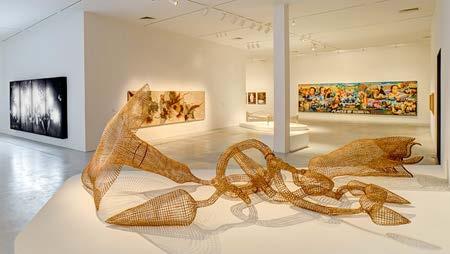
No Country: Contemporary Art for South and Southeast Asia is the first touring exhibition of the Guggenheim UBS MAP Global Art Initiative, a multi-year collaboration that charts contemporary art practices in three major geographic regions: South and Southeast Asia, Latin America, and the Middle East and North Africa. Presenting recent works by artists from the region, No Country introduces audiences to some of the most challenging and inventive voices in South and Southeast Asia today. The exhibition is held at the Centre for Contemporary Art (CCA), at Gillman Barracks, from now till July 20, 2014. For more information on available resources and docent-led or teacher self-led tours, please visit: http://gillmanbarracks.com/cca/299 .
Looking into the Art Classrooms
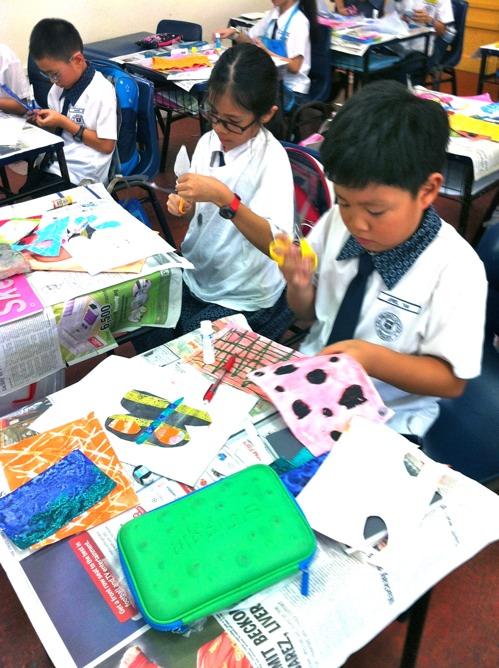
MAKING THE ORDINARY “POP”
By Ms Liao Ziyan, Beginning Teacher, Bendemeer Secondary School
THE NEED TO RETHINK AND RE-EVALUATE
I believe that the purpose of art education in secondary schools is not to develop talented artists, but to nurture the creative abilities of our young people, so that they are equipped with the essentials problem-solving skills that are in demand in this 21st century. I joined the school in 2013, and I was blessed to be working with my mentor and friend - Mdm Noorlizah, who shares similar ideals and dreams. Realising that the existing Scheme of Work (SOW) may not be able to engage our 21st century learners, we embarked on redesigning our art curriculum. It is my honour to share with you one of the modules that we have drafted, and I appreciate comments and feedbacks that will help us refine them. (liao_zi_yan@moe.edu.sg)
How can we plan lessons that can engage the 21st century learners? How do we create opportunities for our learners to develop habits of mind? How do we nurture confident, selfdirected learners who are also active contributors and concerned citizens through the arts?
With these considerations in mind, we decided to use the Understanding by Design framework to develop two art modules, which aim to be student-centred and with authentic tasks that are open ended. These modules have different modes of assessments to encourage studio habits of mind.
INTRODUCTION TO OBSERVATIONAL DRAWING (2 weeks)
We wanted students to identify the differences between drawing from observation and drawing from memory. Students were seated in groups of 8 and as a group, they were challenged to make an accurate drawing of the art teacher. Each member was only given 10 seconds to add on their group members’ drawing without erasing anything. This short activity got the class excited. I later used scaffolding questions to elicit responses from students to help them understand the importance of “seeing” in drawing.
“Which group’s drawing is the best and should win this challenge? Why do you say that this group’s drawing is the most accurate? How many of you did turn and look at Miss Liao while you were drawing?” This activity led to an interesting discussion on what entails a conceptual (drawing from memory) and a perceptual drawing (drawing from observation).
A TYPICAL LESSON THEN
One of the first lesson from the previous SOW was on the Elements of Art — Lines. The objectives of the lesson were for our learners to identify the different types of lines in our environment, and explore the various possibilities of lines in art making. The first task was to complete a worksheet where students were expected to illustrate the different types of lines based on adjectives given such as ‘zigzag’, ‘wavy’. The next task was a worksheet with part of M.C Escher’s drawing. Students were asked to complete the drawing with a combination of lines. Rather than tapping on existing knowledge on using lines to create meaningful images, students usually ended up in a pattern-making exercise, using lines rather mindlessly to fill up the paper.
We asked ourselves, do these lessons help our students to be visually literate? Are they able to observe, understand and make meaning of what they see? While our students may be able to name all the different types of lines and use these lines to make an image, they might not have grasped how other art elements can enhance an artwork’s concept. After all, there are rarely artists that only use lines to express their intents. While Elements of Art are important building blocks in art, teaching them in isolation and in a segmented manner presents a rather de-contextualised learning experience for students. Meaning-making is lacking in the above activity. So at the end of the day, students were unable to develop any ideas or create visuals to communicate them.
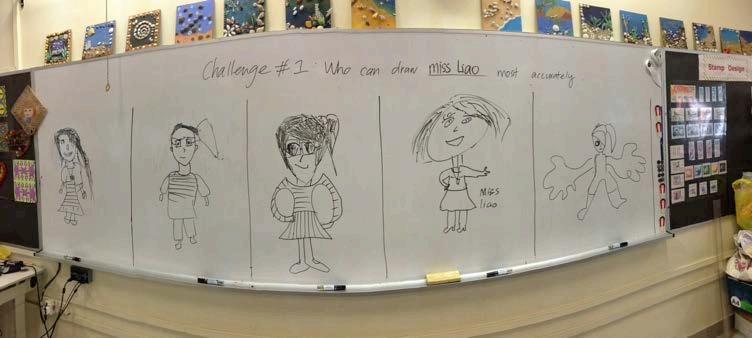
For the rest of the lesson, students were introduced to the blind contour drawing exercise, and they practiced “seeing”. In the following lesson, they explored drawing using unconventional drawing tools such as tissue paper, satay sticks and eye droppers. The purpose of this activity was to expand students’ idea of pencil as the only tool for drawing, and to provide opportunities for students to explore and experiment.
ART TECHNIQUE: SIZE AND PROPORTION (2 weeks)
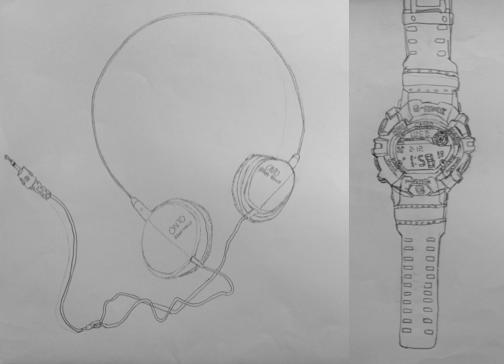
After they had chosen an everyday object, students made an accurate drawing of their subject matter. The remaining lesson focused on how to make a proportional drawing. Instead of demonstrating the steps of making an accurate drawing using the grid-square method, I posed another challenge to the class to device a method of enlarging an
image as proportionately as possible. Each group was only given one long wooden stick, an image, and a piece of mahjong paper. The rationale was to get students to think of multiple solutions to a problem. Some of them figured out how to use the wooden stick to mark out the length of the object and used it as the unit for multiplication. Others used a ruler to measure the length of the image and the mah-jong paper and did the calculations. Students were self-directed and worked collaboratively, building on one another’s ideas to find solutions. My role was to facilitate and ask appropriate questions to help the groups when they were stuck while working on the problem.
ART APPRECIATION: CLAES OLDENBURG & SIZE MATTERS, ANDY WARHOL & REPETITION
(3 weeks, non-consecutively)
The objective of integrating art discussions into the module is to introduce ways artists use mundane objects as subject matters in their artworks. In Oldenburg’s works, mundane objects were often presented in exaggerated scale and humorous ways that changed how one perceived the environment.
Rather than presenting these information as ‘facts’, we wanted to promote active thinking and learning. Hence, we adapted questions from the pedagogical resource — Let’s Talk About Art (STAR, 2013), to guide students in their group discussion. The collaboration helped students to build on one another’s knowledge, and see multiple perspectives and interpretations of art. The guiding questions also helped
students to think critically by focusing explicitly on the process of thinking.
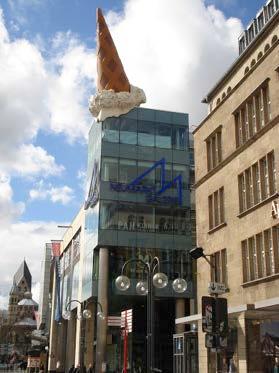
SEE
- What can you see or recognise in this artwork?
- What do you think is the subject matter of this artwork?
- What words will you use to describe this art work?
- What does the artwork remind you of?
THINK
- What do you like about this artwork?
- What do you think it is about?
- Would the meaning of the artwork change if it is of a different scale?
WONDER
- What questions or puzzles do you have?
- If you can rename this artwork, what would it be?
To help students to choose an everyday object as their subject matter, I also introduced trending Instagram artist,
Javier Perez’s works where he used everyday objects in composing images that challenges our way of seeing.
Javier Peréz’s work:
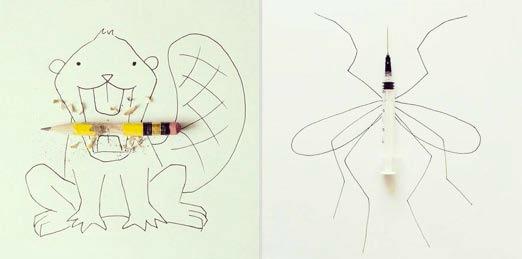
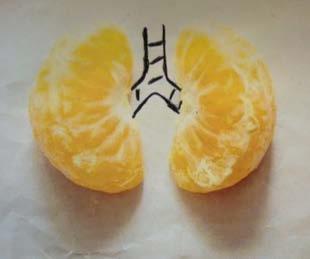
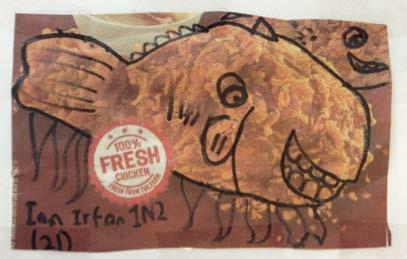
Students’ responses to Javier Peréz’s work:
only do they act as visual stimuli, it is also easier for the teacher to refer to the artworks in future lessons. Andy Warhol’s artmaking processes, his sources of inspiration and his background in the advertising industry were discussed to help students gain a better understanding of the artist’s influences and intents.
MID-POINT CHECK: TIMED ASSIGNMENT
We designed a time-based assignment in 3 parts for our students as mid-point check to consolidate the students’ learning. The first component required students to make an observational drawing of their hand with as much details, using an unconventional drawing tool which they attempted in previous lessons. The hand was chosen as the subject matter as it is accessible and structurally interesting to draw. The second component consists of some questions on Claes Oldenburg’s use of mundane objects as public sculptures, and Andy Warhol’s use of repetition method in his art making processes. Lastly, there was also an open ended question: “If you are a pop artist today, what will you choose as your subject matter? Explain your answer.”
Some students responses include:
“If I were a pop artist today, I would choose a phone with an ear piece on it. Because nowadays, people are always listening to music and it has become an everyday object”
To introduce Andy Warhol to the students, we printed artworks by the artist and exhibited them around the art room. When the art works are around the classrooms, not
“I would choose a chair as it is an everyday object, one that we use almost all the time. People don’t think of the chair as
a potential subject matter for art, so I would want to make the chair look extraordinary”
This timed assignment was also a form of feedback to the art teachers. It allowed us to assess how much our students understood certain art concepts that were introduced to them in term 1, and we were able to clarify misconceptions before their studio lessons in term 2.
STUDIO TASK: SILKSCREEN PRINTING (Term 2, 5 Weeks)
To spark students’ curiosity and prepare students for their studio task in term 2, I showed them videos of designers and artists who use silkscreen printing in their processes. The videos framed class discussions on what silkscreen printing is, the type of skills and attitudes one needs to have to work in a studio setting. As students researched more about silkscreen printing, a list of guiding questions was used to help focus their attention:
• How do pop artists use silkscreen printing in their artmaking process?
• What are the different types of printing techniques?
• What are the materials used?
For the next 2 lessons, students spent time preparing their stencils as well as experimenting with colours. Through exploration, they decided which material would be best for creating the stencils and the preparations required to
achieve a multi-layered print. Concepts of positive and negative spaces were also highlighted to enhance the design of their prints. As students experimented with colours, they learnt that not all colours have the same opacity and they had to plan their layering process for the best results. They also looked into trying out different colours for positive and negative spaces to test out the effects of colour harmony and contrast.
To further customize their work, students were allowed to print their design on different surfaces as long as they could justify their decisions. This got them quite excited as some students brought in personal items like skateboards, Tshirts and bags to have their designs printed on them.
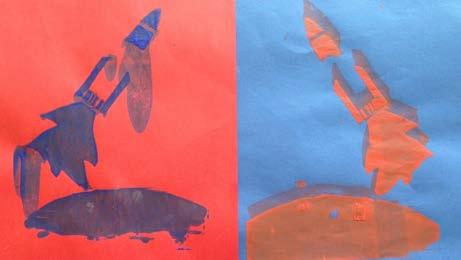
“It was actually an accident as I was cutting my transparency, the lines were cut. Everything became a mess but it gave me an idea of what it would be called. It looked like a rocket leaking oil in space,
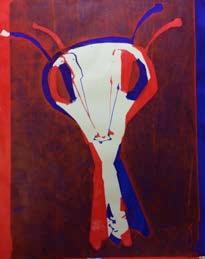
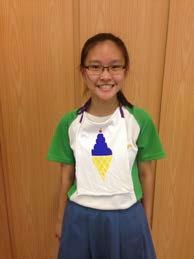
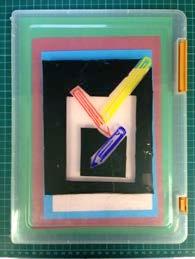
which reminded me of the movie Gravity. In the movie, the main character had to survive in space alone, with limited oxygen, fuel and a lot of danger. This print looks the same, extremely horrifying.”
“The interesting part about silkscreen printing is the repetition. With the stencil we can always repeat the artwork with different colours”
To consolidate students’ learning over this 15-week module, reflection questions were posed. By reflecting on their processes, students also realize that beyond the endproduct, the learning gained and discovery made in the artistic process is equally, if not more, important.
• What was most interesting about silkscreen printing that you have learnt?
• What was one problem that you faced during the silkscreen printing process?
• How did you overcome that problem?
• If you can do something differently, what would it be?
• What is the title for your work? Explain why.
CONCLUSION
We will continue to make improvement to our SOW to meet our learners’ needs as we believe that a SOW is a piece of progressive work. As we continue to refine the modules, we will work towards strengthening the flow and structure of lesson activities and assessments.
The collaborative learning and art explorations put in place helped to build students’ confidence as they were encouraged to develop their own personal responses rather than depending on the teacher to provide ‘correct’ answers or solutions. They learnt to deal with certain levels of ambiguity and at times, had to think critically and creatively to get around challenges.
I felt that our attempt at expanding their understanding of drawing and having different modes of assessment was also effective. Most of our students felt that they could not excel in art because they are not “talented”. But with these different approaches to drawing and the multiple modes of assessments, they were less intimidated by their perceived lack of abilities and were more inclined to participate actively in art lessons.
Most of the students will not have art lessons beyond their lower secondary school education as our school does not offer art in the upper secondary level. We want all of learners to take away the problem-solving and reflective thinking skills that they can apply in other aspects of their life.
Studio Critiques
by Ms Grace Kwa, Programme Manager, STAR
We should not underestimate the potential of empowering our students by regarding them as artists and introducing them to artistic processes used by artists. Studio critiques refer to the common activity where artists talk about their artworks with other artists be it to gain feedback, to clarify or articulate one’s thoughts or to initiate generative discussions. In our classrooms, studio critiques are becoming quite a prevalent art pedagogical tool, with time set aside for formal class discussions and reflections on students’ artworks–sometimes as mid-point checks to motivate and inspire the artists in their art-making process and at other times, as means to conclude a module by discussing a finished work.
W HAT IS A GOOD CRITIQUE ?
‘Good critiques are those guided by a leader with a sense of purpose; those in which the students could speak and participate; and those that included more than judgment — when judgments were offered, they were positive as well as negative, and were accompanied by reasons and sometimes by explicit criteria. The students went away feeling good about their experiences in these critiques, and believed they had learned something about art.’ (Barrett, T. (1997). Talking About Student Art, Chapter 1, Studio Critiques: As They Are and as They Could Be, p.4)
While studio critiques are often associated with shedding light on artworks, the conversational aspects of critiques are equally important. How can we encourage students to participate actively, give thoughtful responses and ask good questions? How do we set the stage for a meaningful studio critique where artist presenting and audience participating can gain from the rich discussion?
PURPOSE
Professor Terry Barrett suggested that there are many kinds of critique and it would help if the teacher first identifies its purpose. If the focus of the critique is for students to make close observations and draw interpretations of their peers’ works and for the artists concerned to gain insights from what the class is observing and interpreting, discussions
need not even enter the judgmental realm. If the critique is meant to celebrate the works students have done, then by all means celebrate, allow only positive comments and defer any negative comments to another time. If the critique aims to nurture the maker to be more articulate about what he/ she has created, let the artist speak. On the other hand, if the emphasis is in helping all students become better critics of art, limit the role of the artist whose work you are talking about and focus on the group conversation.
NATURE OF CRITIQUES
In his book, Making Art — Form & Meaning, Professor Barrett purports that descriptive critiques “increase participants’ ability to see” and for the artist “to be hearing what others see and the words they use”, he/she can gain insights on others’ perspectives, expanding one’s awareness of his/her own work. We have the tendency to notice different things due to personal and cultural experiences, for an artist to hear what others do and do not notice about a work can be revealing and may inform future developments (Barrett, 2010, p. 241 — 242).
Interpretative critiques focus on the implied meanings of the work and can be facilitated based on these simple questions:
• What do I see?
• What is it about?
• How do I know?
This is quite similar to I See/ I Think/ I Wonder, an Artful Thinking Routine, which some teachers have begun using in their classes to varying degrees of success. Both sets of thinking strategies encourage students to observe keenly, and then invite them to make inferences based on observable evidences or what is already known about the work. ‘Wonder’ could translate to “What do I want to ask the artist?” This question could stimulate curiosity while setting the stage for inquiry.
It is a misconception that critiques have to be judgmental and sometimes students may plunge into this “I like this work”, “This is not a good work” frame of mind prematurely, before even giving the work due consideration. Students may end up making irresponsible comments, especially negative ones, or turning defensive if they are not ready to give or receive summative evaluations. This could corrode the safe environment needed for students to engage freely and authentically in the discussion of an artwork.
Professor Barrett suggests that responsible judgments contain three aspects:
1. An appraisal of merit
2. Reasons for the appraisal
3. Criteria on which the reasons are based (Barrett, T. (2011). Making Art: Form and Meaning, Chapter 13, Studio Critiques, p.243)
For example,
2. Because it pushes the conventional boundary of painting to create something new and visually exciting
3. Thus challenging the viewer to reconsider our understanding of paint as a medium
1. This is a meaningful work of art
2. Because it addresses pertinent social issues, challenging viewers’ perspectives through the use of powerful imageries
3. Meaningful art serves a social cause beyond fulfilling aesthetics criteria
FACILITATOR’S PREPARATION
While the teacher may initially need to role-model a good studio critique by providing meaningful responses and constructive feedback, be mindful that students will also need opportunities to practice their critiquing skills. At some point, it would be the necessary for the teacher to assume the role of a facilitator, helping to move the discussions along with carefully formulated questions and redirection of and reframing answers rather than being the main source of participation.
To help facilitate the process, it would be wise to consider the duration of time each artist is given to speak during the critique of his/her work. In some situations, it could be that the artist does not speak at all or only speaks about one’s work towards the end of the art discussion. Professor Barrett cautions that having the artist spelt out his artistic intent too clearly could limit the breadth and depth of the critique as students may start to look for parts of the work that fit or do not fit the artist’s intent, shutting off other possible meanings that could be potential content for further explorations and development.
A teacher should also decide beforehand if all works or only selected works would be covered for the critique. Covering every work in every critique may result in long and superficial sessions, with waning students’ attention towards the end. Decide if some works may benefit more from oneto-one sessions rather than a class critique and follow-up accordingly. Also, to prepare for the session, the teacher could ask for the works to be submitted a few days before the critique to plan the flow of the session as well as to determine the points one would like covered.
With some planning and routines put in place, studio critiques can become engaging and interactive sessions students look forward to. A dynamic environment with robust discussions and sharing of invaluable insights and ideas can greatly motivate. After all, a successful critique is one that leaves everyone inspired to make more art.
STUDIO CRITS ETIQUETTE
Adapted from crits, College of Visual Arts & Design, University of North Texas.
Original Text: Terry Barre&.
Edits & Design: Singapore Teachers’ Academy for the aRts. 2013© Ministry of Educa'on, Singapore and Terry Barre&
NOTE TO FACILITATOR
Be an a&en've and careful listener.
Do not use sarcasm.
Decide whether the cri'que will be primarily descrip've, interpre've, evalua've, and theore'cal or a combina'on of these.
Decide beforehand whether all works will be covered during the cri'que.
Decide on the purpose and dura'on of the crit session.
If you ask a ques'on, do not answer it. Wait for the par'cipants to answer it. Wait as long as it takes.
Determine the role that ar's'c intent will play during the cri'que.
Determine the role the ar'st will play during the cri'que.
Are you inappropriately domina'ng the discussion?
Determine if you need to speak to individuals privately: to give affirma'on, words of encouragement or more directed feedback and advice.
Thank people who respond.
A successful crit leaves everyone inspired to make more art.
NOTE TO CRITIQUE PARTICIPANTS
Crits are rare and precious 'mes to talk about art.
The purpose of this crit is to mo'vate and encourage your peers. Do not discourage or demoralise.
I can be kind while also being cri'cal.
To describe what you see and interpret what it means is to be cri'cal.
No one wants to be embarrassed in front of their peers.
Some things are be&er said privately than publicly.
Crits need not always be judgemental.
I am an important part of this crit.
Do not ask rhetorical ques'ons; make statements.
Help to quickly build a psychologically safe environment.
People need to feel safe before they will speak honestly.
What’s happening at STAR?
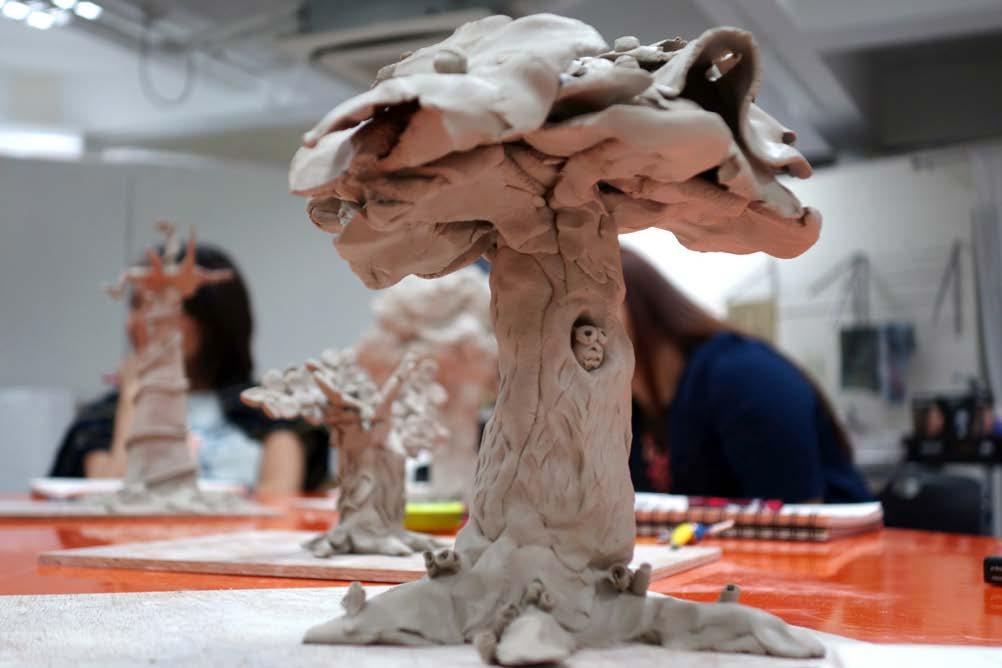
Sculptural Forms Workshop with OEIRs
STAR was privileged to have Mrs Bettina Reeves & Ms Karen Thomas, from Royal Welsh College of Music and Drama (RWCMD), conduct a workshop on Sculptural Forms with our Art teachers on 10-12 March 2014. Bettina and Karen took the teacher participants on an experiential art journey over 3 days and had everyone ‘re-exploring’ familiar materials and ‘re-acquainting’ with developmental art-making processes.
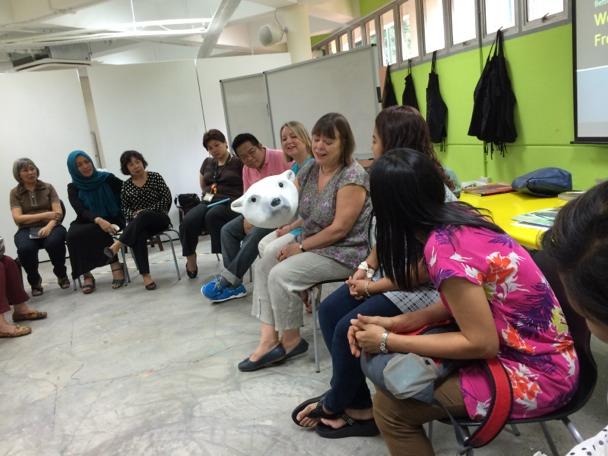
- Outstanding Educator in Residence
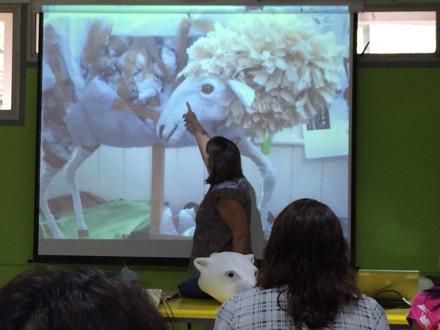
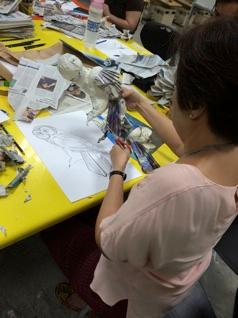
Top: Bettina sharing on her projects
Left: Starting with study sketches followed by creating maquettes using newspaper and tape
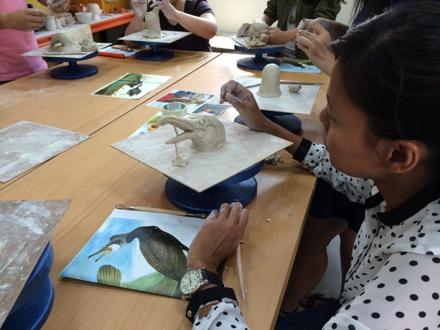
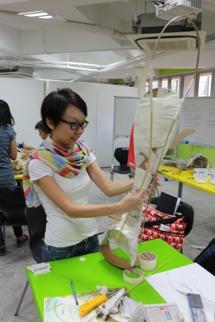
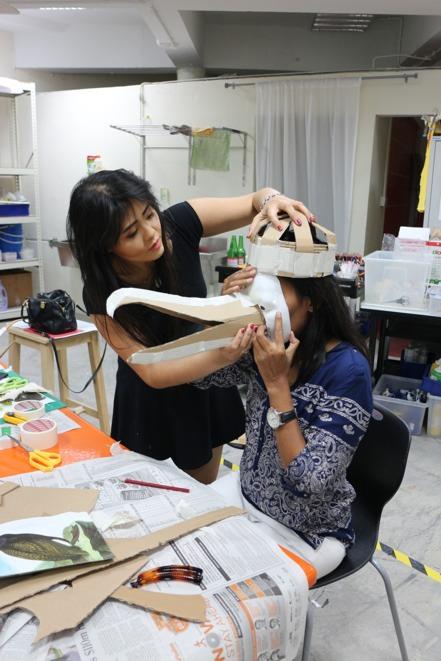
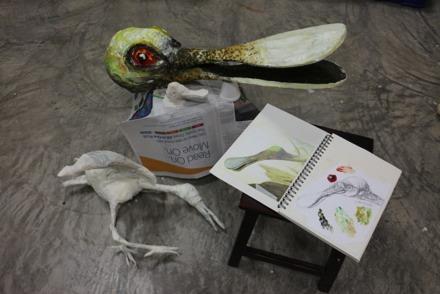
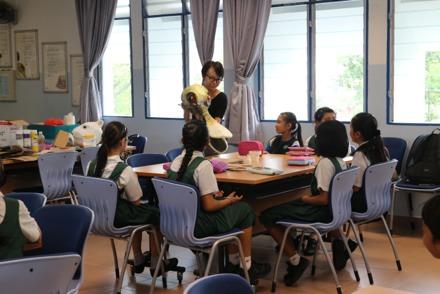
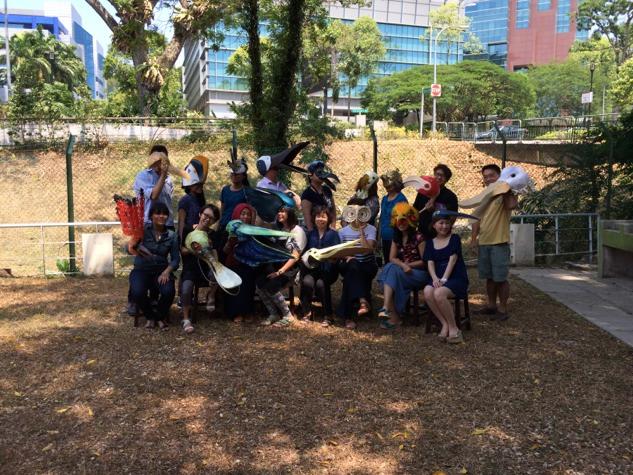
Top: The process at a glance: Observe and sketch > Deepen understanding of materials and proportions through maquettes > Display and critique. Above: Teachers with their beautiful final head gears
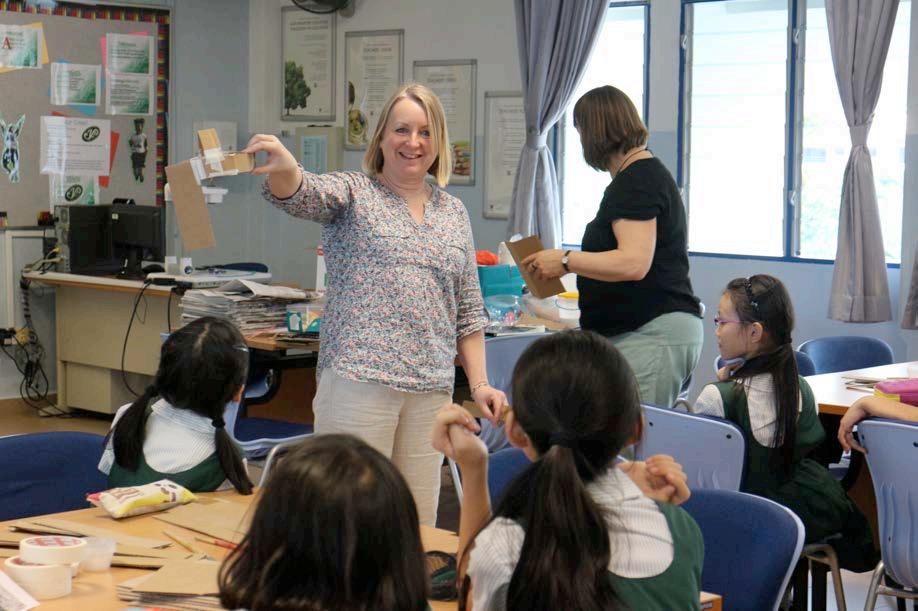
Top: Use of teacher’s head gear as visual reference in the classroom; Above: Lesson demonstration at Juying Primary School, Karen showing students how to create a base for their masks
STAR will be hosting 4 visiting professors as STAR’s OEIR in July. Here’s a glance of the Professional Development opportunities available.
Lois Hetland (1 - 7 July)
Professor, Massachusetts College of Art and Design
Workshop related to the use of Thinking Routines in the context of Art classrooms (25 places, 2 - 2.5hrs).
This workshop explores the use of Artful Thinking routines through playful, low-stake art experiences, analysis of classroom examples, presentation and discussion. Participants will explore how thinking routines can be used to support students in developing understanding across the arts and academic disciplines.
Lesson demonstrations on the use of Thinking Routines in the context of Art classrooms. This would be followed by Just-in-Time consultancy on topics related to facilitating students’ thinking
Mass lecture related to Assessment in the Visual Arts (for approximately 100 places, 2 - 2.5hrs).
This session reports on an assessment developed with artists and art educators measuring envisioning in the
visual arts. The focus on envisioning is an important step in assessing artistic learning.
To sign up for the workshop and mass lecture, please go to http://central.opal.moe.edu.sg/events?
ptid=6286&func=event_view&rid=100083
You will need to log onto OPAL. Please note that registration is on first-come-first-served basis and will close once maximum number is reached.
Terry
Barrett (14 - 25 July)
Professor of Art Education & Art History, University of North Texas, Professor Emeritus 2009, Ohio State University
Lesson demonstrations on the use of effective questioning strategies for Primary and Secondary Art teachers. This would be followed by Just-in-Time consultancy for teachers, focusing on facilitating and sustaining student discussions on art. A special afternoon session will be set aside for STAR Champions Primary (Art).
Writing workshop on Criticising Photography for ‘A’ Level and IP school Art teachers, in support of the revised ‘A’ Level Art Syllabus. This would be followed by school visits to select Junior Colleges to provide Just-in-Time consultancy in the area of the teaching of Study of Visual Art, and Theory of Art.
Mass lecture on a topic related to Studio Critique for Secondary and JC Art teachers (for approximately 100 places, 2 - 2.5hrs).
Registration will be made available from 2 July onwards, more information will be provided via email.
Olivia Gude (14 - 25 July)
Professor, Art Education, University of Illinois at Chicago
Workshop related to planning and designing public art in school (for approximately 25 teachers and students, 3hrs x 2 sessions).
Workshop related to exploring “remembered places” in the lives of students, teachers and communities through art (for approximately 25 teachers and students, 3hrs, 2 runs).
Mass lecture for Secondary and JC Art teachers on a topic related to Assessment in Art (100 places, 2 - 2.5hrs).
Dialogue session on Art Curriculum for teachers of all levels (for approximately 20 - 25 places, 2 - 2.5hrs).
Registration will be made available from 2 July onwards, more information will be provided via email.
Sandra Kay (18 - 22 Aug, TBC)
Founding Faculty of Center for Teaching Critical Thinking and Creativity at San Diego State UniversityLecturer, San Diego State University; Educational Consultant for gifted education and creative thinking
Workshop related to designing of elegant art tasks for approximately 25 teachers and students, 3hrs x 2 sessions). As part of workshop support, visit select schools to give consultation to selected art teachers.
Mass lecture on elegant art tasks and creativity (for approximately 100 places, 2 - 2.5hrs).
Dialogue session on gifted, talent and artistic developmental stages of children, for Applied Learning Programme (ALP), Learning for Life Programme (LLP) schools with a focus on visual arts.
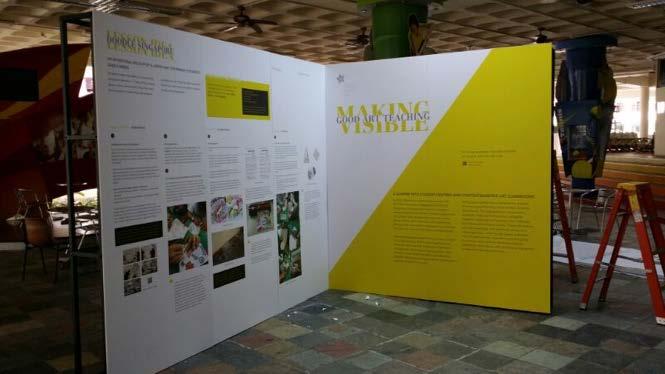
At MOE’s Principal’s Forum on 31 March 2014, STAR shared 5 student-centred art lesson units through a pedagogical exhibition, as part of the fraternity’s art education advocacy efforts. The exhibits informed principals of the intricacies of lesson unit design and the preparation needed in order for art teachers to deliver engaging and meaningful art lessons.
The 5 lesson units were produced by some of our Art STAR Champions (Primary), soft copies of these lessons ideas are accessible here: www.makingartteachingvisible.com
Once again, the STAR Champions will be conducting art workshops and organising pedagogical exhibitions for art teachers in their zones sometime in Aug-Sep this year. More information will be made available in July, keep a lookout for more details!
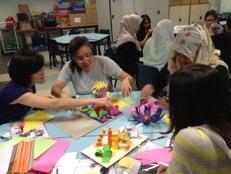
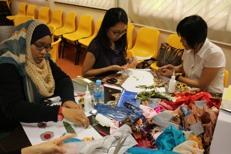
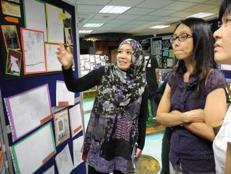
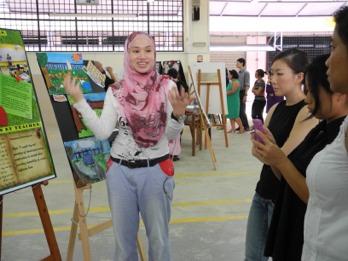
a-edge
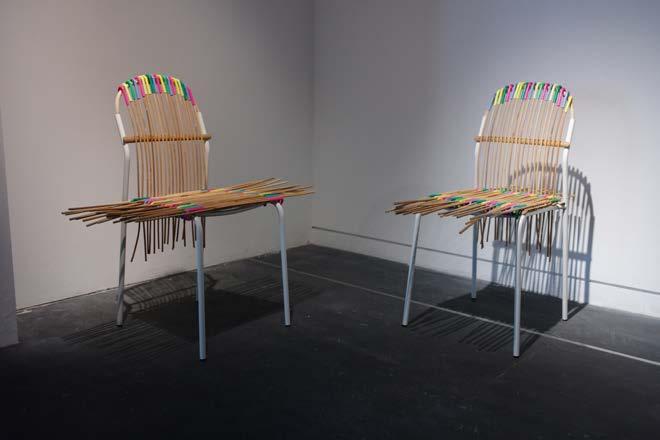
Lee Choong Yuan, Lorraine
Please sit
Canes, metal frame chairs
2013
36 artworks by 39 teacher-artists were selected from a total of 77 submissions for this year’s a-edge exhibition held over 13 days in March. The increased submission (more than double the submission for the inaugural exhibition in 2012) was also complemented by more inter-disciplinary and collaborative works. The visitorship also increased by 30%, from 1300 in 2013, to 1700 in 2014.
Participating artists also shared lesson ideas with gallery visitors via a QR code printed on the exhibition wall labels. A new feature in the a|edge exhibition series, this mobile app enables all teachers to retrieve and apply the lesson ideas in-situ. The exhibition also included a curator’s tour, live art performances, and an art teacher recruitment networking session. For more information, visit: http://staraedge.wordpress.com and https://picasaweb.google.com/112184173461035848969/AEdge
I took the opportunity to attend a Singapore Tyler Print Institute workshop on paper sculpture. It taught me how to make my own paper and create sculptures using the wetfolding method used in contemporary origami.
Grace Kwa, Programme Manager (Art)
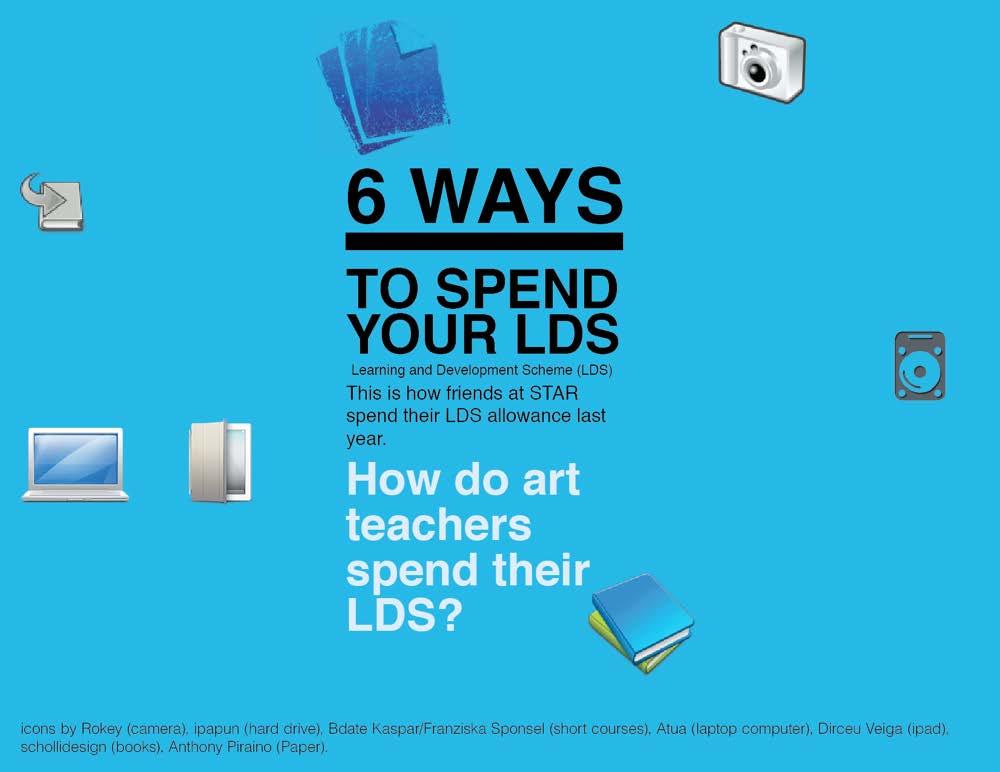
I attended a short course on Asian Art History at LASALLE College of the Arts. The learning was rich because it allowed me to see Singapore contemporary art in the context of our region’s art history.
Ira Wati Sukaimi, Programme Manager (Art)
I bought a laptop for my own work. This includes accessing course materials and writing essays for my part-time Masters course with the National Institute of Education. I also prefer to use my own laptop for putting graphic design together for school.
Chun Wee San, Programme Manager (Art)
Take this fun poll now: http://bit.ly/1tW1J7o
Results of the poll will be published in the next issue!
I bought a digital still camera and portable external hard disk in 2013. Taking digital photographs is part of my routine of documenting the interesting and stimulating things I encounter. The video function on my camera also helps me to document teachers’ lessons I observe. This allows us to review the lesson together.
Victoria Loy, Master Teacher (Art)
I bought an external hard disk to backup and archive my work form my office laptop. I also use my LDS for books that I know I will refer to for teaching.
Tang Hui Jing, Programme Manager (Art)
I use my LDS claims to pay for reference books related to art, as well as Art Education related journal subscriptions.
Lim Kok Boon, Programme Director (Art)
STAR Post (Art) is an electronically distributed, quarterly newsletter committed to share ideas, foster a teacher-led culture, and provide professional support for Singapore art teachers.
From Issue 4(2013), we have decided to feature the following content:
Cover story: big ideas in art education
Features: Research & case studies
Lesson Ideas
Spotlight on Art Pedagogies/Strategies
Teachers’ Viewpoints
Announcements: What’s Up at STAR

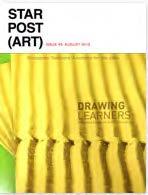
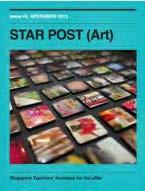
Do you have an interesting article, lesson idea,
Writing Guidelines
Reasons to share:
Give something back to the fraternity.
Be an advocate for your own splendid work. We have readers from MOE HQ and professionals in the field.
Practise writing, and build your professional portfolio in the process. Impress you peers (and school leaders too).
Be yourself, and write in good English.
For articles, pick a topic related to an issue close to your heart. This could be a concept you have learnt at work, or from a class you take; an ‘Aha’ moment in an area of concern that had been bugging you for years; reporting on a research you have conducted; your own approach to art teaching, philosophy, or making. We will be your critical friends and we will walk through the writing process with you. Write between 800 - 1200 words and be sure to include good digital photographs.
For lesson ideas, we accept a variety of formats. However, we found that writing in prose, explaining the lesson objectives, describing the lesson sequentially, including images of students’ work and including a personal reflection helps the reader appreciate the lesson best. Write between 800 - 1200 words.
For comments, feedback, or shower of appreciation for another fellow art educator, speak your mind between 50 to 500 words. The editors reserve the right to edit or decide if the text is appropriate for inclusion.

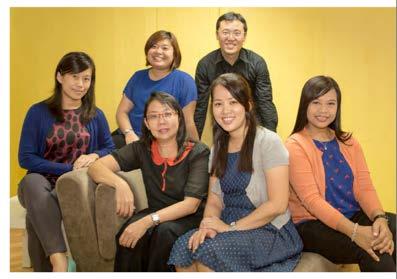
A
http://www.star.moe.edu.sg
